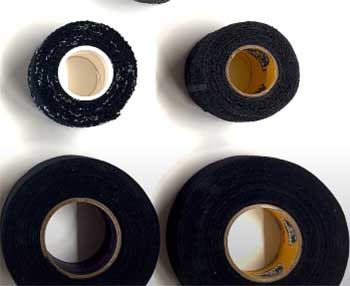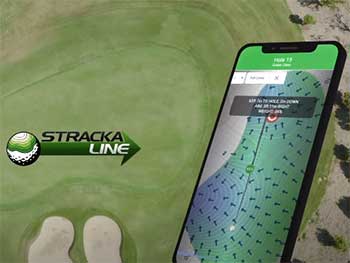I’ve always been a bit of a bargain hunter. There’s something satisfying about snagging a great deal, especially on something as practical as shoes. So, when I walked into a Big 5 Sporting Goods store and saw rows of sneakers, cleats, and hiking boots priced way lower than at other retailers, my curiosity kicked in.
Why are Big 5 shoes so cheap?
Is there a catch, or is this place just a hidden gem? I decided to dig into the reasons behind their low prices, and what I found was a mix of smart business strategies, market positioning, and a few trade-offs. Let me walk you through it, step by step, in a way that’s as clear as a sunny trail run.
Reasons For Big 5 Shoes Being So Cheap
- Focus on Cost-Conscious Customers
- Frequent Sales and Discounts
- Lower-Quality Brand Variants
- Regional Focus and Lower Overhead
- Private Label and Budget Brands
- And many more…
Let’s elaborate these reasons in detail…
Reason 1: They Focus on Cost-Conscious Customers
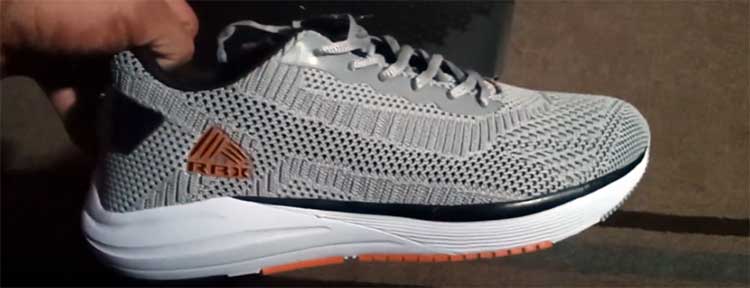
When I first started shopping at Big 5, I noticed their stores didn’t scream “luxury.” The fluorescent lights, straightforward displays, and no-frills vibe gave me the impression they weren’t trying to compete with high-end retailers like REI or Dick’s Sporting Goods.
That’s because Big 5 has carved out a niche for budget-minded folks like me. They’re not chasing the crowd that drops $200 on premium running shoes. Instead, they cater to people who want decent quality without breaking the bank.
Big 5’s business model is all about offering value. They stock shoes from well-known brands like Nike, Adidas, and ASICS, but they often focus on entry-level or mid-tier models.
These are the shoes that get the job done—whether you’re jogging around the block or kicking a soccer ball with your kids—without the fancy tech or premium materials that jack up prices. By targeting cost-conscious customers, Big 5 can negotiate bulk deals with brands to keep costs low.
I learned this firsthand when I picked up a pair of Adidas running shoes for $40—way cheaper than the $100+ versions I’d seen elsewhere. They weren’t the latest model with carbon-fiber plates, but they were comfortable and durable for my casual runs.
This approach also means Big 5 doesn’t invest heavily in creating an upscale shopping experience. No sleek coffee bars or interactive displays here—just racks of shoes at prices that make you double-check the tag. It’s a trade-off I’m happy to make for the savings.
Reason 2: Frequent Sales and Discounts
One thing I love about Big 5 is how often they run sales. It’s like every week there’s a new deal in their Weekly Ad or a “Red Tag Shoe Sale” sign in the store.
I remember grabbing a pair of Under Armour basketball shoes for $54.99, down from $59.99, which was already a steal compared to other retailers. How do they pull this off? It’s all about their inventory strategy.
Big 5 keeps prices low by regularly cycling through stock with discounts. They’ll mark down shoes that are slightly older models or overstocked items to keep inventory moving. I spoke to a store employee once who told me they’re encouraged to offer unlisted discounts if a shoe was recently on sale, as long as you ask politely.
This isn’t just hearsay—a Reddit thread from years back mentioned how shoppers could score deals by asking about non-listed discounts, sometimes knocking a $50 pair down to $20. That’s the kind of insider tip that makes me feel like I’m beating the system.
These sales aren’t random, either. Big 5 uses a high-low pricing strategy, where they set a regular price but frequently offer promotions to create urgency. It’s why I always check their website or swing by the store when I need new shoes—you never know when a 20% or 30% off deal will pop up.
This approach keeps their prices competitive and ensures they don’t get stuck with unsold stock gathering dust.
Reason 3: Lower-Quality Brand Variants

Now, here’s where things get a bit tricky.
I learned from a Wikipedia article that Big 5 got into hot water back in 1990 for selling brand-name shoes that were actually lower-quality versions made specifically for their stores.
For example, some New Balance shoes had cardboard heel cups instead of the plastic ones you’d find in higher-end models.
This raised a red flag for me, so I did some digging to see if this was still a thing.
While Big 5 has cleaned up its act since that $125,000 fine, they still stock some brand variants designed to hit lower price points.
These aren’t fakes—let’s be clear about that. They’re legit shoes from brands like New Balance or Skechers, but they might use less expensive materials or skip advanced features like gel cushioning or premium outsoles.
For instance, I compared a pair of ASICS running shoes at Big 5 to a similar model at a specialty running store. The Big 5 version had a simpler midsole and less breathable mesh, but it was half the price. For my casual jogs, it was fine, but if I were training for a marathon, I might’ve noticed the difference.
This strategy lets Big 5 offer big-name brands at budget prices, but it’s a trade-off. You’re getting a shoe that’s functional but not always top-of-the-line. For me, it’s worth it for everyday wear, but if you’re a serious athlete, you might want to double-check the specs before buying.
Reason 4: Regional Focus and Lower Overhead
Walking into a Big 5 store feels like stepping into a local shop, even though they’ve got over 430 locations across the western U.S. That regional focus is a big reason their prices stay low.
Unlike national chains with stores in every state, Big 5 operates mainly in places like California, Arizona, and Washington. This means they don’t have the massive overhead costs of running stores in high-rent areas like New York City or Chicago.
I noticed their stores are often in strip malls or less flashy locations, which keeps rent low. Their distribution center is also based in California, which simplifies logistics since most of their stores are nearby.
Less shipping distance equals lower costs, and those savings trickle down to the price tags. When I bought a pair of hiking boots for $45, I realized part of the reason was that Big 5 isn’t burning cash on nationwide shipping or swanky storefronts.
Plus, their smaller footprint means they don’t need a huge corporate structure. Fewer executives and less bureaucracy translate to more savings passed on to customers like me. It’s refreshing to shop somewhere that feels grounded in the community rather than a faceless mega-chain.
Reason 5: Private Label and Budget Brands
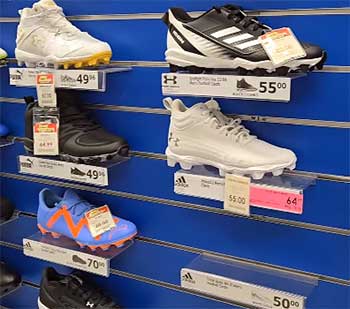
Another thing that caught my eye at Big 5 was their selection of lesser-known brands alongside the big names.
They carry private-label shoes or budget brands like Avia or Nevados, which are designed to be affordable from the get-go.
I tried a pair of Avia running shoes once, expecting them to fall apart in a month, but they held up surprisingly well for the $25 price tag.
These budget brands don’t have the marketing budgets of Nike or Adidas, so they don’t need to charge as much to cover advertising costs.
Big 5 leans into this by stocking a mix of these shoes alongside their brand-name offerings.
It’s a smart move—I can choose between a $60 Nike pair or a $30 Avia pair, depending on my budget. The private-label stuff might not have the same prestige, but for casual use or kids’ shoes that’ll be outgrown in a year, they’re a fantastic deal.
Reason 6: Seasonal and Clearance Inventory
I’m a sucker for a good clearance rack, and Big 5’s is always stocked with gems. Their strategy of clearing out seasonal inventory keeps prices low year-round. For example, I snagged a pair of winter boots for $35 in early spring because they were clearing out cold-weather stock.
Big 5 doesn’t let shoes sit around—they’d rather discount them heavily than hold onto them until next season.
This ties into their broader approach of keeping inventory lean. By moving older or seasonal stock quickly, they avoid the costs of storing unsold goods. I’ve seen sandals marked down in fall and running shoes slashed in winter, all to make room for new arrivals. It’s a win-win: I get a deal, and they keep their shelves fresh.
Reason 7: Minimal Marketing Expenses
Unlike some retailers that bombard you with flashy ads or sponsor major sports events, Big 5 keeps its marketing low-key. Their website mentions they’ve relied on weekly print ads since 1955, which is about as old-school as it gets.
I’ve never seen a Big 5 commercial during the Super Bowl or a sponsored athlete hyping their shoes on Instagram. That’s intentional.
By skipping expensive marketing campaigns, Big 5 saves a ton of money. A report I read on The Investor’s Podcast noted that their outdated marketing strategy hurts their brand image but helps keep costs down.
Those savings mean lower prices for me when I’m browsing their shoe racks. I don’t need a celebrity endorsement to convince me a $40 pair of soccer cleats is a good buy—I just need them to fit and last.
Reason 8: Economies of Scale with Big Brands
Big 5’s long-standing relationships with major brands give them some serious buying power. They’ve been around since 1955, and with over 430 stores, they can negotiate bulk deals that smaller retailers can’t.
When I bought a pair of Nike training shoes for $50, I realized Big 5 likely got a steep discount by ordering thousands of pairs at once.
This economies-of-scale advantage lets them stock brand-name shoes at prices that compete with online giants like Amazon. They’re not just relying on one-off deals—they’ve built a system where they can consistently offer Adidas or Under Armour shoes at a fraction of the cost you’d find elsewhere.
It’s like they’re passing the bulk discount straight to me, which I’m not complaining about.
Reason 9: Catering to Casual and Youth Athletes
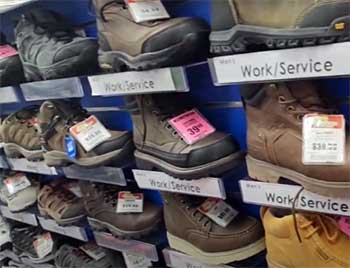
Big 5’s shoe selection is geared toward casual athletes and kids, which keeps prices down.
I noticed they have a ton of youth shoes for sports like soccer, baseball, and basketball, often priced between $20 and $40.
Kids grow out of shoes so fast, so it makes sense to offer affordable options for parents like me who don’t want to spend $100 on cleats that’ll be too small in six months.
Even for adults, their focus on casual and recreational athletes means they stock shoes that prioritize value over cutting-edge performance.
I’m not running an ultra-marathon, so I don’t need a $150 pair with carbon plates.
Big 5’s shoes are perfect for weekend warriors or folks like me who just want something reliable for the gym or a hike. By targeting this market, they can keep their inventory affordable.
Reason 10: Free Shipping and Returns on Qualifying Orders
One thing that makes Big 5’s prices feel even cheaper is their free shipping on orders over $69 and free in-store returns. I ordered a pair of running shoes online once, and the free shipping meant I didn’t have to factor in extra costs.
If they didn’t fit, I could return them at my local store without a hassle. This policy reduces the risk of buying shoes online, which makes their low prices even more appealing.
Other retailers might tack on $10 for shipping or make returns a nightmare, but Big 5’s approach keeps the total cost down. It’s a small thing, but when you’re already saving on the shoes themselves, it feels like a bonus.
The Trade-Offs: What You Need to Know
Before I wrap up, let’s talk about the flip side. Big 5’s low prices come with some caveats. The selection can be hit-or-miss—sometimes they don’t have my size, or the styles feel a bit dated. Their stores can also feel understaffed, and I’ve had mixed experiences with customer service.
One time, I had to wait 10 minutes to get help finding a pair of cleats. And as I mentioned earlier, some shoes might be lower-quality versions of brand-name models, so you’ll want to inspect them closely if you’re picky about performance.
Still, for the price, I find these trade-offs manageable. Big 5 isn’t trying to be a premium retailer—they’re about getting you solid gear at a price that won’t make your wallet cry. For me, that’s a fair deal.
Frequently Asked Questions (FAQ)
I’m not a financial advisor, but I can share what I’ve learned about Big 5 Sporting Goods as a company. Big 5 (BGFV) is a publicly traded retailer focused on low-cost sporting goods, which gives it a niche in a competitive market. However, a report from The Investor’s Podcast highlights challenges like low profit margins due to their budget focus and high labor costs in California, where over 50% of their stores are located. Their outdated marketing strategy also limits their growth compared to competitors. On the flip side, their low-cost model appeals to value-driven customers, which could provide stability. If you’re considering investing, weigh these factors and check their latest financials. For detailed advice, consult a financial professional.
Big 5’s return policy allows free in-store returns on qualifying orders, but worn shoes can be tricky. Their website doesn’t explicitly say you can’t return worn shoes, but they typically expect items to be in “new” condition. I had a friend who returned a slightly worn pair due to a defect, and the store accepted it after verifying the issue. A Trustpilot review mentioned a smooth return process for defective shoes, thanks to helpful staff. Your best bet is to bring your receipt and explain the situation—stores may make exceptions for defects, but heavily worn shoes might not qualify. Check with your local store for specifics.
The name “Big 5” comes from the company’s origins in 1955, when it started with five Army surplus stores in California. Founders Maurie I. Liff, Harry A. Liff, and Robert W. Miller named it after those original five locations. Over time, Big 5 evolved into a sporting goods retailer, but the name stuck as a nod to its roots. It’s a quirky piece of history that makes the brand feel a bit more personal to me.
Big 5 stocks a mix of big-name and budget brands. You’ll find shoes from Nike, Adidas, Under Armour, ASICS, New Balance, Skechers, and Bearpaw, among others. They also carry private-label and lesser-known brands like Avia and Nevados for even lower prices. Their website lists a huge range of brands across all products, from Callaway to Crocs, so there’s something for everyone, whether you’re after a recognizable name or a cheap alternative.
Wrapping It Up
After exploring Big 5’s shoe section, I’ve come to appreciate their approach. They keep prices low by focusing on budget-conscious customers, running frequent sales, stocking lower-cost brand variants, and keeping overhead down with a regional focus.
Add in private-label options, quick inventory turnover, minimal marketing, and bulk buying power, and it’s clear why I can walk out with a solid pair of shoes for under $50. Sure, there are trade-offs—like limited selection or simpler materials—but for casual athletes, kids, or anyone who loves a deal, Big 5 is hard to beat.
Next time you’re hunting for affordable shoes, give them a look. You might be as pleasantly surprised as I was.
